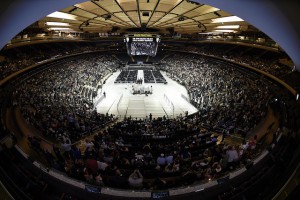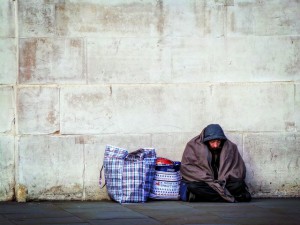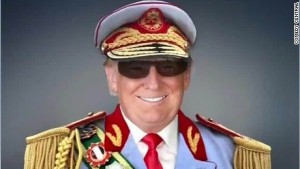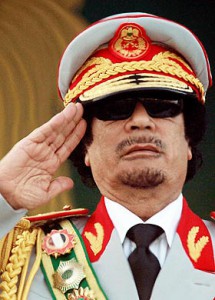In New York City on any given night, there are more than 59,000 people experiencing homelessness. That’s nearly three times the number of people who can fit into a sold out Madison Square Garden.
In Los Angeles, there are approximately 26,000 homeless people each day, larger than many small towns around the country.
Homelessness – as we know it now – emerged as a “crisis” in the United States in the 1980s when, for the first time, cities were beginning to see large quantities of people sleeping on street grates and park benches. Despite myriad approaches to address the situation, the number of people experiencing homelessness in the U.S. each year remains in the millions.
Now, communities are trying a new approach, declaring homelessness a “state of emergency.”
This all started in late September, when Mayor Eric Garcetti made Los Angeles the first city in the nation to make such a declaration. In early October, Portland, Oregon followed suit. Two days later, the governor of Hawaii declared a state-wide state of emergency over homelessness. Then, on November 2, the mayor of Seattle and the county executive of the surrounding King County joined together to declare a civil emergency regarding homelessness there.
Declaring a state of emergency, an act generally reserved for natural disasters, has at least two important functions. First, it is an instrumental move. As Portland Mayor Charlie Hales explained, “We’ve tried slow-and-steady. We’ve tried by-the-book. It’s time to add to the tools we currently lack.” These “tools” include opening up access to additional funding streams, both local and federal. In Los Angeles, the emergency declaration appears to have freed up $113 million to help address homelessness. Another “tool” provided by the declaration is the ability to suspend zoning codes that prevent communities from building or converting properties into homeless shelters.
Secondly, and most relevant to this blog’s readers, is the symbolic function of an emergency declaration. Labeling homelessness an “emergency” marks it as a pressing need, an urgent concern. It also, in the sense of the root “emergent,” helps to bring homelessness out from concealment and into greater public visibility.
Seattle Mayor Ed Murray explained it this way: “We must get this issue back on the national agenda. The reality is, we are in a moment in our history where decades of service cuts, growing income inequality, and many untreated issues of mental health and drug addiction have finally resulted in a human crisis seldom seen in the history of our city.”
Homelessness is, indeed, urgent. Living without consistent shelter is life-threatening. It reduces one’s life expectancy and increases one’s vulnerability to violence, illness, and injury. But what’s interesting to me about the timing of these declarations of emergency is their tardiness.
The Oxford English Dictionary defines an emergency as “the arising, sudden, or unexpected occurrence (of a state of things, an event, etc.).” Similarly, it says an emergency is “a juncture that arises or ‘turns up’; esp. a state of things unexpectedly arising, and urgently demanding immediate action.”
At this point, homelessness is neither sudden, nor unexpected. It arose in shocking numbers starting in 1980, now 35 years ago. What, then, is the juncture that has prompted communities, just now, to seek additional resources for its amelioration? Why is it newly urgent? Murray says this has “finally resulted in a human crisis seldom seen” [emphasis mine], but it’s unclear what exactly has caused these community leaders to have reached a tipping point (or, in rhetorical parlance, a “kairotic moment”) for pursuing emergency measures.
Certainly homelessness is rising in these communities – Hawaii’s homeless population has risen 23% since 2013 – but the numbers of people living on the streets, in hotels, and in shelters in all of these communities was already in the thousands.
Maybe it’s rising death tolls. In King County, Washington, 66 people have died while homeless just this year.
Maybe it’s the elections. Increasingly, I’m seeing homelessness as a much-discussed voting issue in local politics. And with a national election on the horizon, there may be a hope that homelessness could become a more significant part of Congress and the president’s agendas.
Maybe it’s a cascade effect. Governments frequently look to other examples of what to do to address social and political problems. It certainly looks like that’s happening in this case.
Of course, it may matter little why these declarations are being made now if they succeed in persuading people that homelessness must be urgently addressed. As is typical of critics of rhetoric, some worry that “this is all simply words,” and advocates say they’re in a “wait-and-see mode” until “after the initial press coverage fades.” These folks’ emphasis on the instrumental function of states of emergency misses the opportunity of the symbolic.
Most of the measures these declarations make possible are temporary. For example, Seattle’s civil emergency opens up a one-time burst of $5.3 million, but offers no further guarantee of elevated funding levels. Even suspending zoning requirements is just that: a temporary suspension of a community’s typical approach to managing its space. But reminding people that homelessness is urgent and “demanding immediate action” has the potential to shift public attitudes about homeless people. If homelessness is an emergency, like a natural disaster, it may be harder to blame (and disregard) people who are experiencing it for their poverty. And even if it does not shift these attitudes, making homelessness an immediate priority may reduce the number of people subject to the demonization that often accompanies the condition.
Homelessness has long been an emergency for people experiencing it. Perhaps these new declarations from our governments will help more people perceive it at such.







